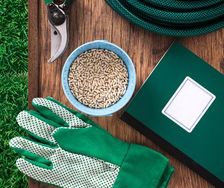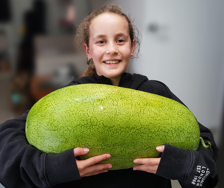Yates Account
Join now
Create a Yates account today!
Sign up to join the Yates Garden Club for monthly e-mails packed with seasonal inspiration, tips for success & exclusive promotions.
Plus if you’re a Garden Club member you can take part in the Yates Growing Community - a blog to share successes, get advice & win prizes in fun challenges along the way!

Forgot password
Enter the email address associated with your account, and we'll email you a new password.
It’s harvest time – here are some tips on how to tell when your vegies are ready to pick.

Eggplants
When harvesting eggplants, picking early is always better than waiting, to stop the fruit getting too bitter. When the fruit develops glossy skin and deepens in colour, lightly press a thumbnail into the eggplant…if it springs back immediately, it’s not quite ripe yet. If it leaves a slight mark on the skin, it’s ready to pick.
Be gentle when harvesting eggplants, to avoid bruising the fruit. Cut or snip the stem just above the green calyx on top of the fruit (and watch out for thorns on spiny varieties).
Keep harvesting frequently to promote more fruiting.

Watermelons
A signal that Watermelons are mature is when the little curly tendrils at the top of the melon stalk dry up and turn brown.
Pick the melon up and give it a gentle rap with your knuckle – if it makes a “hollow” sound, it’s ready to pick. If it doesn’t sound hollow, also have a look at the pale-coloured patch underneath the watermelon – if it has turned yellow, the melon is ready to harvest.
Keep the watermelon at room temperature until you slice it, to maximise the flavour.

Pumpkins
The first sign pumpkins are ready to harvest is the vine dying back – leaves will start to yellow and dry up. If the stem of the pumpkin is drying out, that’s another good sign. When the vine starts to die back, give the pumpkin a rap with your knuckle. A ripe pumpkin will make a hollow “ringing” noise.
You can also give it a thumbnail test – lightly press your nail into the skin. If it doesn’t leave much of a mark, the pumpkin is ready to harvest.
Cut the stems with a sharp knife but leave as much of the pumpkin stem attached as you can, and let it dry out.
Rest your pumpkins in the sun for a week or so to harden up, and then transfer to a well-aired spot for storage. Make sure the pumpkins aren’t touching one another in storage if you can.

Sweetcorn
The signal that sweetcorn is ready to be picked is when the silky tassels turn brown and dry up but check the ear has filled out before picking it. Give the ear a squeeze to make sure it’s fat and juicy inside.
To pick, pull the ears downwards and give them a twist to leave the stalk standing.
For the sweetest flavour, sweetcorn is best eaten as fresh as you can pick it!
















Share
Share this article on social media